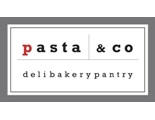General Rules
- Microwave: 1 – 3 minutes on high for 1 or 2 cups (w/ larger portions, stir halfway through heating time). Items packaged in clear plastic containers should be transferred to microwave-safe dish to reheat.
- Conventional: Heat pre-cooked foods in upper half of a preheated 400 degree oven. Generally, it is best to cover food, except to maintain crispiness.
- Conventional v. Microwave? Either will work. We recommend avoiding microwaves for baking our frozen products. You may need to adjust instructions based on portion size and variations in oven or microwave temperature.
French-roasted chickens
- Microwave: Whole chicken 4 minutes on high, rotate and continue to microwave for another 1 – 1 ½ minutes. Half chicken 1 ½ minutes on high, rotate and continue to microwave for another 1 ½ minutes.
- Conventional: Whole chicken uncovered for 20 – 30 minutes in 400 degree oven. Half chicken uncovered for 15 – 20 minutes in 400 degree oven.
Most Meats – Turkey, Steak & Tuna Patties
- Microwave: 1 – 3 minutes on high.
- Conventional: Covered for 15 – 30 minutes in a 400 degree oven. Keep uncovered if food has crisp skins or coating (i.e. stuffed chicken breasts).
Whole Meatloaves
- Microwave: 3 – 5 minutes on high.
- Conventional: 20 – 30 minutes in preheated 400 degree oven, uncovered on a baking sheet.
Salmon Fillets
- Microwave: 1 – 2 minutes on high.
- Conventional: 7 – 10 minutes in preheated 400 degree oven, covered on a baking sheet.
Blanched/Roasted Vegetables – Baby Broccoli & Snap Peas
- Microwave: 1 – 3 minutes on high.
- Conventional: 10 – 20 minutes (depending on the amount) in 400 degree oven. With the exception of roasted potatoes, all vegetables should be covered. Green vegetables may be reheated w/ olive oil in a sauté pan on stove top.
Pureed vegetables – Potatoes & Carrots
- Microwave: 1 – 3 minutes on high.
- Conventional: Covered 20 – 30 minutes in 400 degree oven. Stir halfway through.
Oven Baked Pastas, Casseroles & Risotto Cakes
Cabbage & Cauliflower Gratin, Polenta & Bread Pudding
- Microwave: 1 – 3 minutes on high.
- Conventional: Covered 20 – 25 minutes in preheated 400 degree oven. (Place polenta under a hot broiler to crisp after heating).
Soups
- Microwave: 2 minutes on high, stir and then microwave for 1 minute on medium.
- Conventional: Reheat on stove in a saucepan over medium heat. Stir constantly until hot. If frozen, thaw in microwave on defrost setting, then heat as above. If using stovetop, place frozen soup in saucepan over low. Gradually raise heat to medium to thaw soup. Heat and stir until soup is ready to serve. Taste for density and seasoning; thin with water, stock or milk if necessary.
Pasta sauces
- Microwave: 1 minute on high, stir and heat another minute for 1 pint or 30 seconds for a half pint.
- Conventional: Reheat on a stovetop in sauté pan over medium heat.
HOW TO COOK FRESH PASTA
Allow 4 to 6 quarts of water per pound. Fresh pasta cooks quickly. Bring water and 1 tablespoon salt to a boil.
Shake pasta loose (do not cook more than 2 lbs at a time). Add pasta to boiling water, stir, and begin timing.
Once pasta is cooked, drain well and toss immediately with the sauce, coating evenly.
The True Test is to Taste, Not Time.
- Vermicelli: 1-1/2 minutes
- Ravioli: 10 minutes
- Tortellini: 10-12 minutes
- Linguine: 1-1/2 minutes
- Pescine: 3-1/2 minutes
- Rigatoni: 4 minutes
- Rotini: 2 minutes
- Fettuccine: 1-1/2 minutes plus simmer 3 minutes with sauce
- Gnocchi: Allow 4 to 6 quarts of water per pound. Do not add salt to the water. Boil gnocchi for 2 minutes or until all gnocchi is floating on top of water. Drain and add sauce
To cook frozen pasta:
Do not thaw.
Place directly from freezer into boiling water and stir until separated.
Allow extra time to become tender.
Baked:
To use fresh pasta in casseroles, pre-boil the pasta for half the normal cooking time. Pasta will finish cooking as it bakes in layered dish.
Fresh lasagna sheets do NOT need to be pre-boiled, unless they are being cut and rolled for cannelloni.
For cannelloni, place in boiling water for 30 seconds.
Storing:
To refrigerate, loosely wrap pasta in a plastic bag; fresh pasta will keep three days refrigerated.
To freeze, wrap tightly in a second bag and freeze for up to a month.
Note: separate raviollis before freezing.




